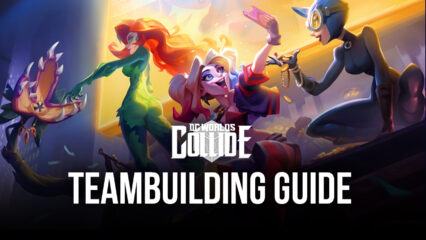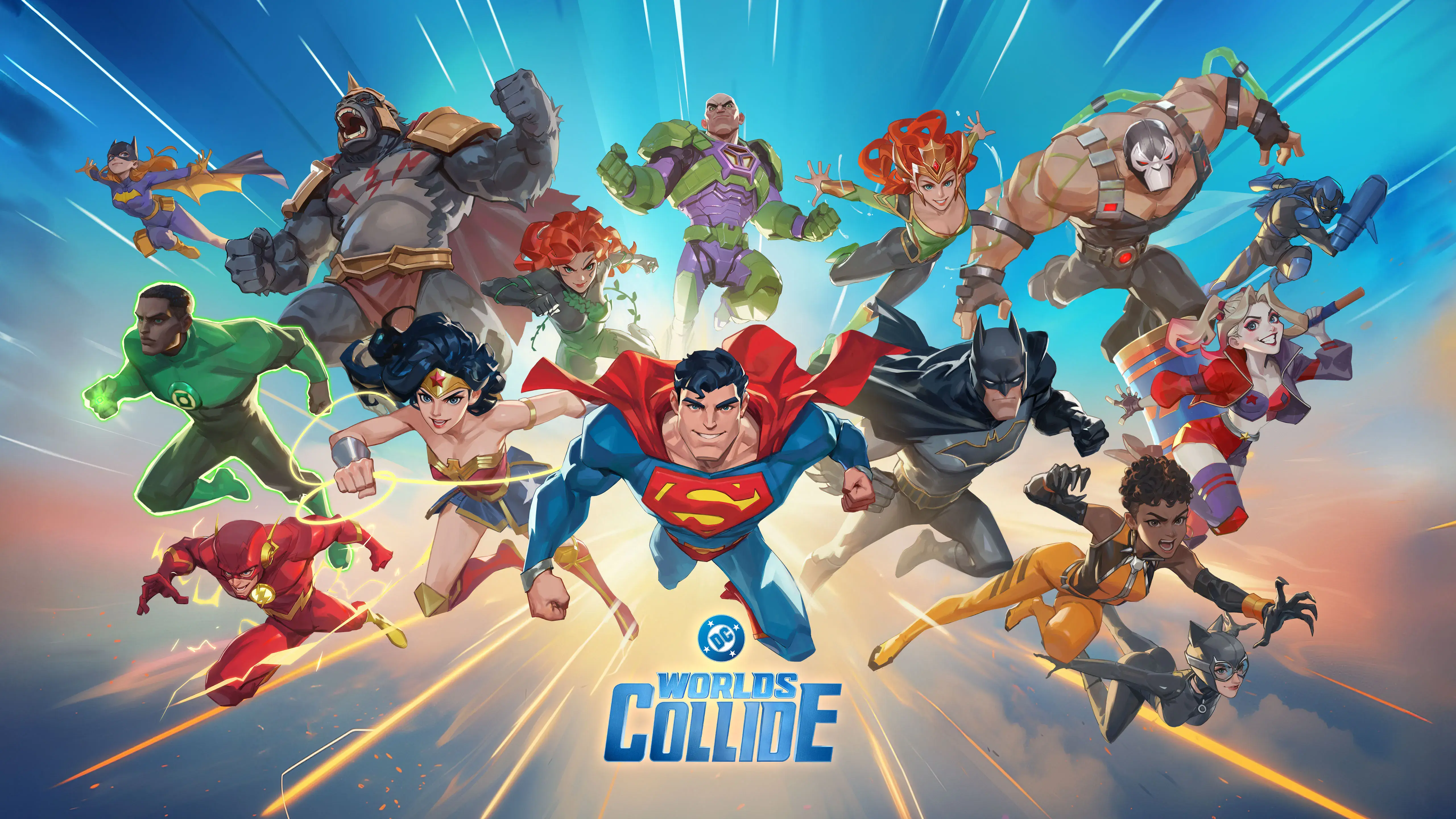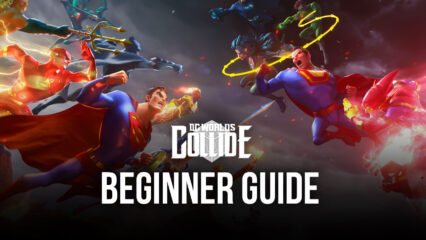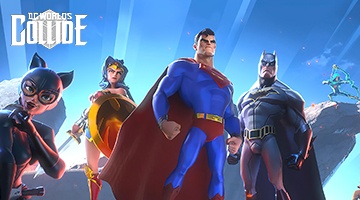An In-depth Guide to Units in DC Worlds Collide
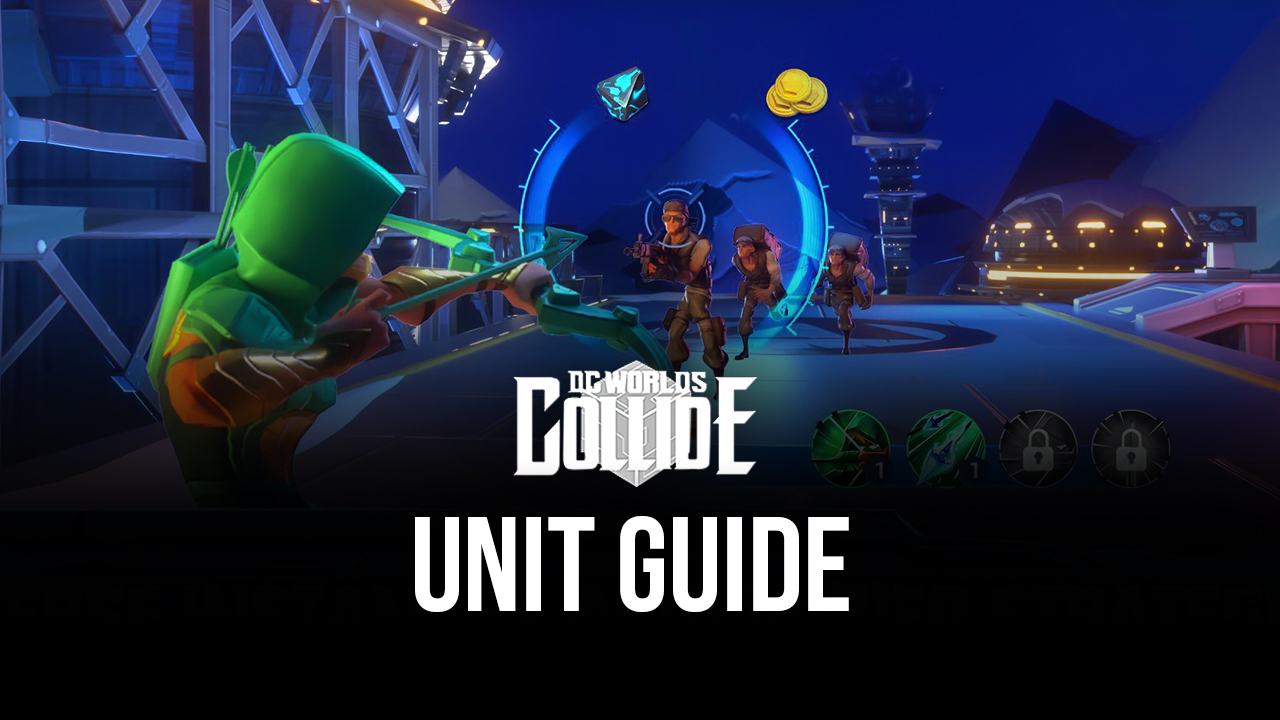
Heroes and villains in DC Worlds Collide play a big part in being the strongest player on the server. There are a ton of units to choose from, but the player can only choose five characters at a time to include in their team. It’s easy to commit to five units that you think might be strong because they look powerful, but in reality, there’s so much more to these units than you think. This guide will help introduce the characteristics of units that you need to learn about in the game.
Each unit has something that makes them special and the game has designed it in such a way that players will be encouraged to create a variety of teams with different unit combinations. However, it’s hard to tell how one unit works well together with another simply by looking at them. Once you’ve learned how each of a unit’s characteristics works, mixing and matching units to create the perfect team will come naturally and you’ll be able to create the perfect team depending on the situation.
Class/Trait
Class refers to the unit’s duty in combat. There are three classes in the game, which are the Tanks, Damage Dealers, and Supports. Tanks refer to characters that have high defenses and health, which makes them perfect on the frontline. Damage Dealers are in charge of hitting the enemy as hard as they can to finish the job before the enemy can react. Support units assist the rest of the team by providing buffs that increase stats or heal team members so that they can survive longer.
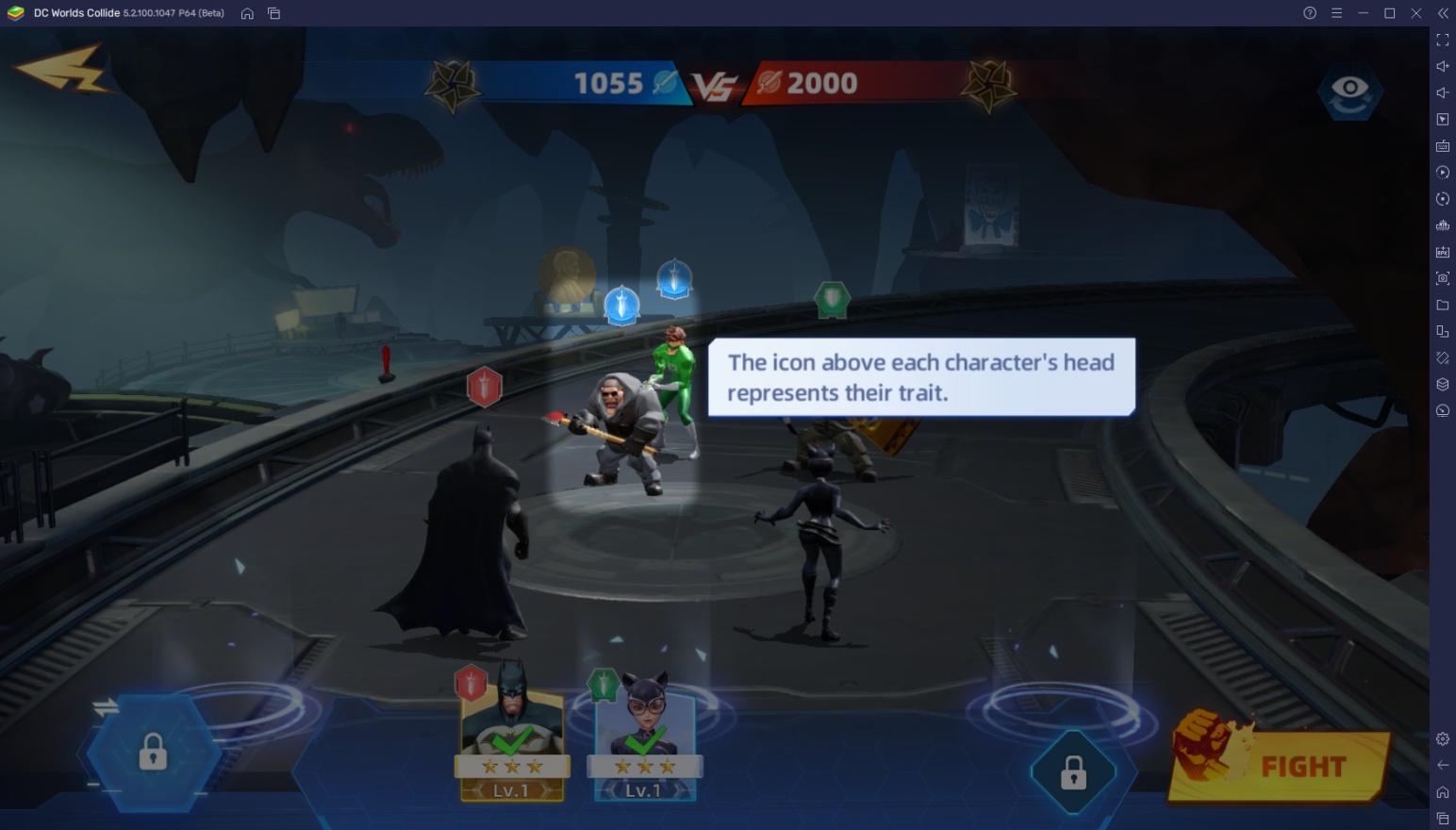
Trait refers to attribute that the character belongs to – Strength, Agility, or Intellect. Each trait is strong or weak against the other, meaning some units are just naturally stronger than the others. There’s a feature called Ally Bonus, which gives your team bonus stats when you combine a certain number of units that have the same trait together in one team. Trait also affects what kind of attacker a unit can be, but it doesn’t matter all that much unless you want to run a mono-trait team.
Unit Tags
Tags are different from roles and types. Tags refer to the modifiers that are associated with a specific unit. To look at your unit’s tags, go to the Archive and select Character Files. You’ll see tags such as Super Hero, Gotham, and Justice League. There are also secondary tags below them that indicate what they can do in combat. These may not look significant in the early game, but they’ll be more relevant once you unlock Tactical Resonance, but we’ll explain that later.
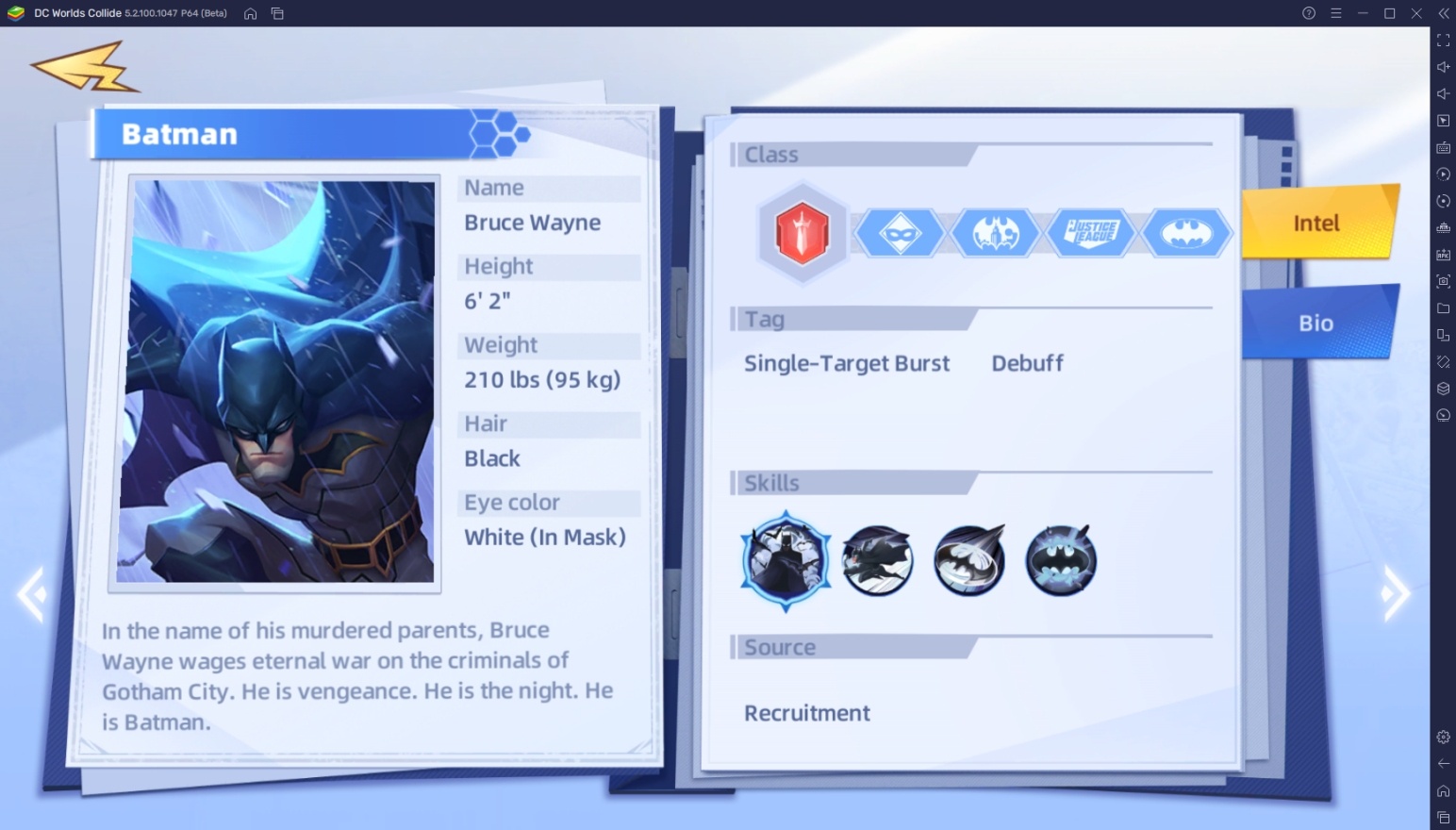
Looking at secondary tags, you get to understand what that specific character has to offer in the game. For example, Batman has the “single-target burst” tag, which indicates that he specializes in dealing large amounts of damage to one unit at a time. This will help you build your team because it means that for your secondary damage dealer, you may want a unit that has multi-target damage, instead of single-target burst, to diversify the units you’re dealing damage to.
Rank
Rank refers to the number of stars that a unit has. There are two significances to this mechanic, the first being that it improves a unit’s base stats, making them stronger. Rank also improves the power of your unit’s abilities. The highest rank that a unit can attain depends on its natural rarity. For example, a Rare (blue) character can only go up to seven stars. This means that higher-rarity units will have a higher ceiling, despite the lower-rarity ones being easier to promote.
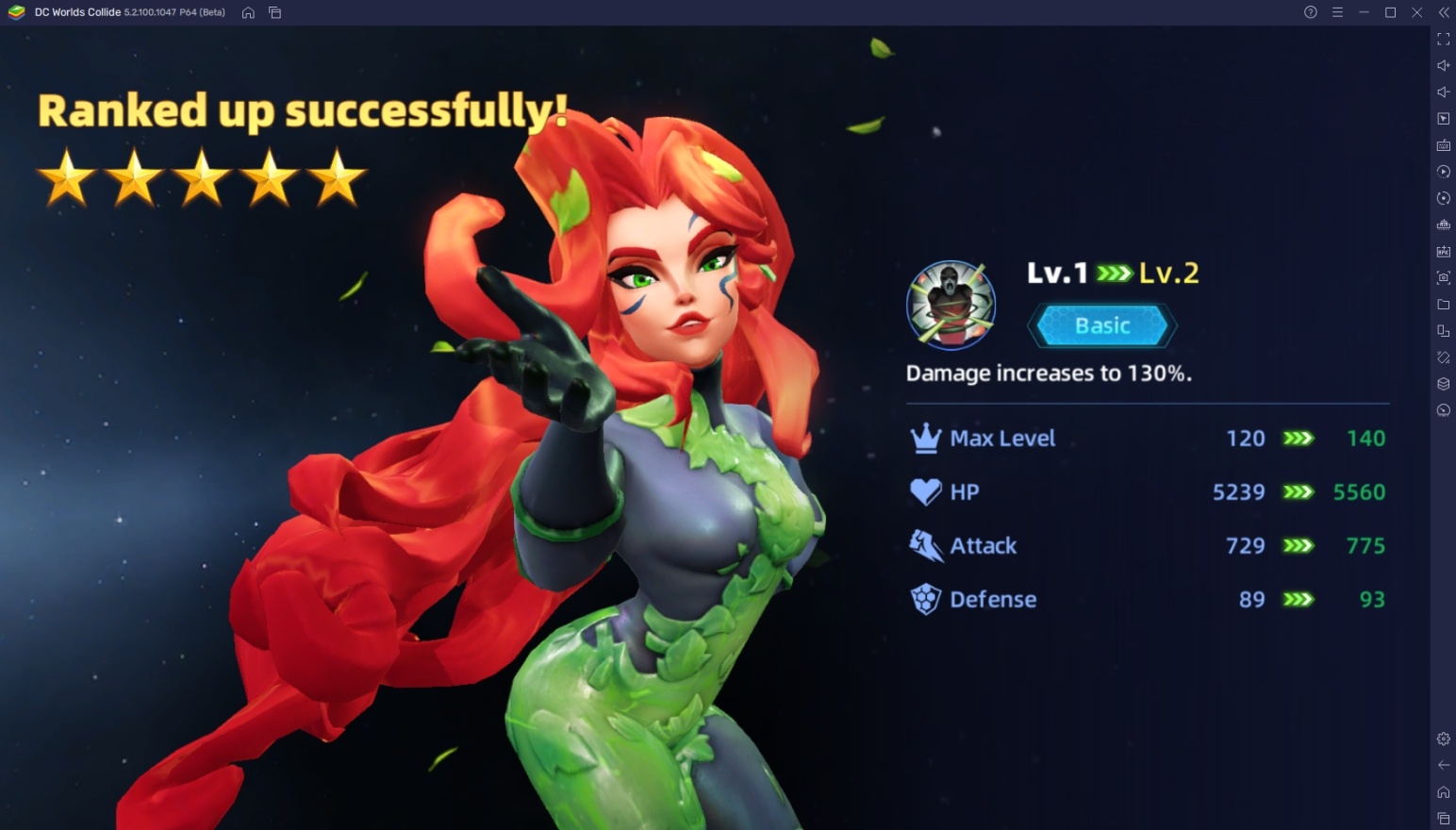
Promoting a character to the next rank depends on their rarity as well. For Elite and lower units, they need a certain number of their own character fragments to get promoted, increasing in number every time they do. Epic characters and higher can use other units’ fragments up to 5 stars. Once they reach that point, they’ll need their own character fragments, which is especially difficult to collect because they have lower appearance rates in the mother box compared to other units.
Resonance
We’ve mentioned resonance already, but let’s explain it further. There are two types of resonance in the game, which are the Resonance Links and Tactical Resonance. Resonance Links are the most common type and essentially improve your base stats whenever you unlock a character that’s related to the character you’re upgrading. Some characters have hidden resonance links, which means that their partners are not released in the game yet.
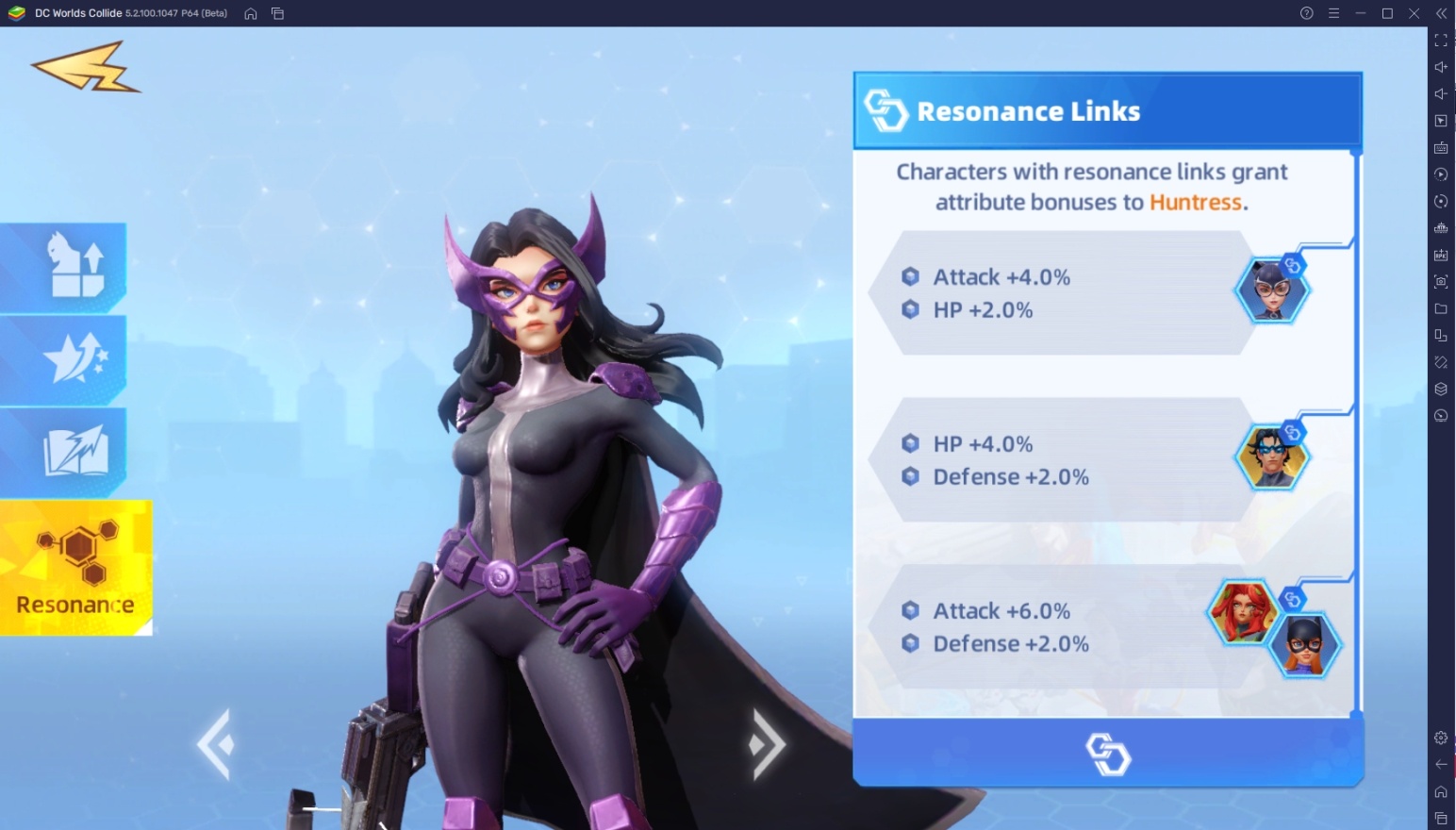
Tactical Resonance is much rarer. Only a select set of units have tactical resonances. Luckily, you get one of them by default – Batman. Tactical resonances are team-wide buffs that increase the team’s attack power, health, and defense as a primary effect. However, each tactical resonance has a different secondary effect. This usually affects units of a specific tag or the type of attacks they carry out. You can only select one tactical resonance, so study what kind of team you want to build.
Base Stats
Base stats are easy to understand, but some players have a few misconceptions about them. The four basic stats are health, defense, attack power, and speed. There’s no need to discuss the first three, but players often underestimate the value of speed. Speed is a stat that determines your units’ order in the attack queue. The faster a unit is, the more attacks they’ll get in during a battle. Agility units often have a high-speed level, whereas intelligent characters move really slowly.
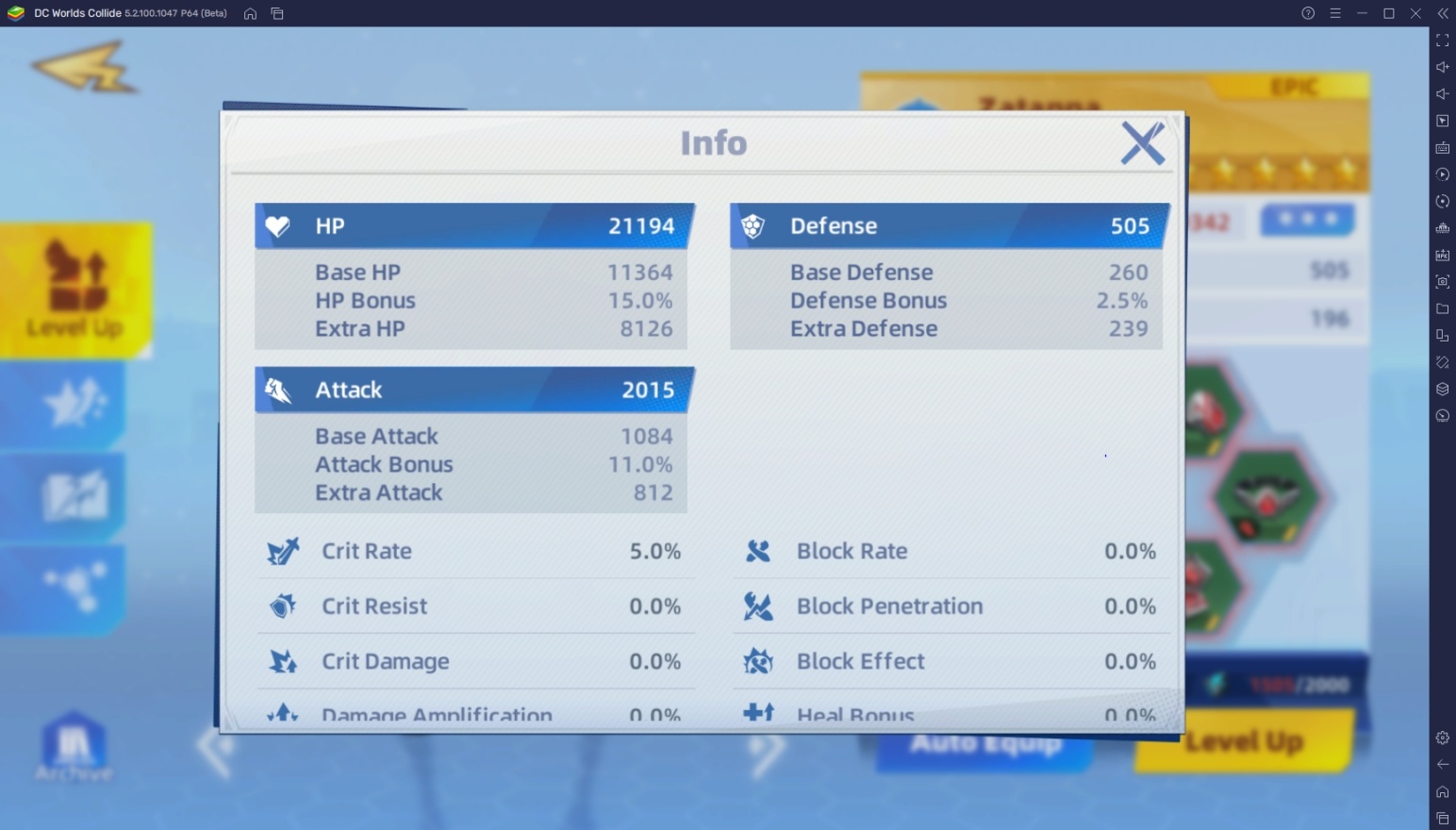
There are a lot of ways to get more base stats. The best way is to level and rank up your unit. Once you attach something to the unit like gear or a buff, those become bonus stats. Bonus stats are also vital, so players need to equip a lot of items to make these characters that much stronger. There is no shortage of ways to increase your bonus stats; all you have to do is make sure that you try out everything.


